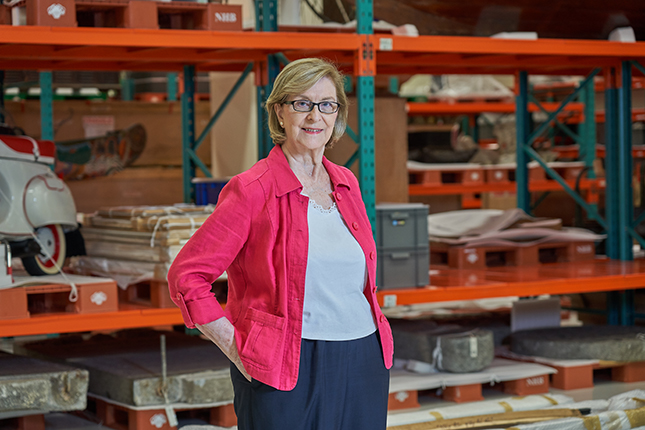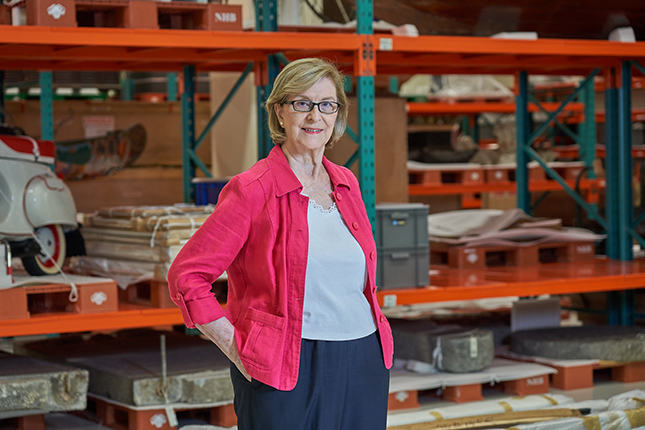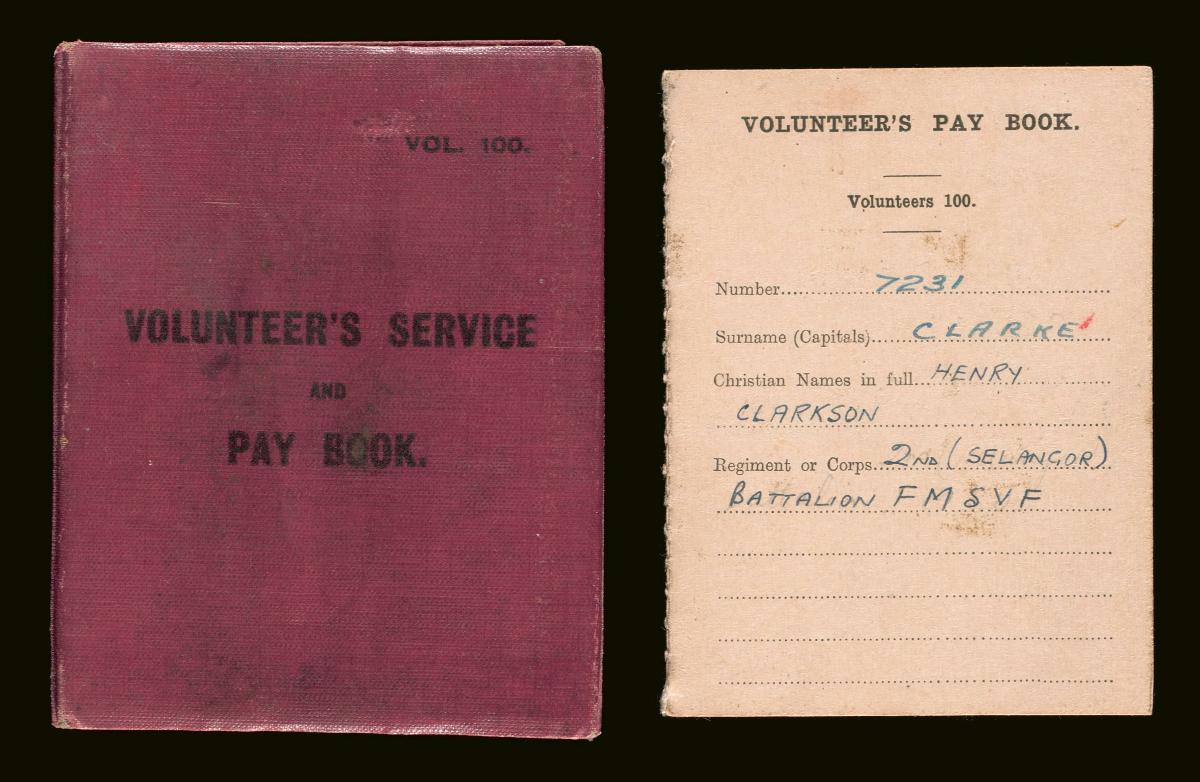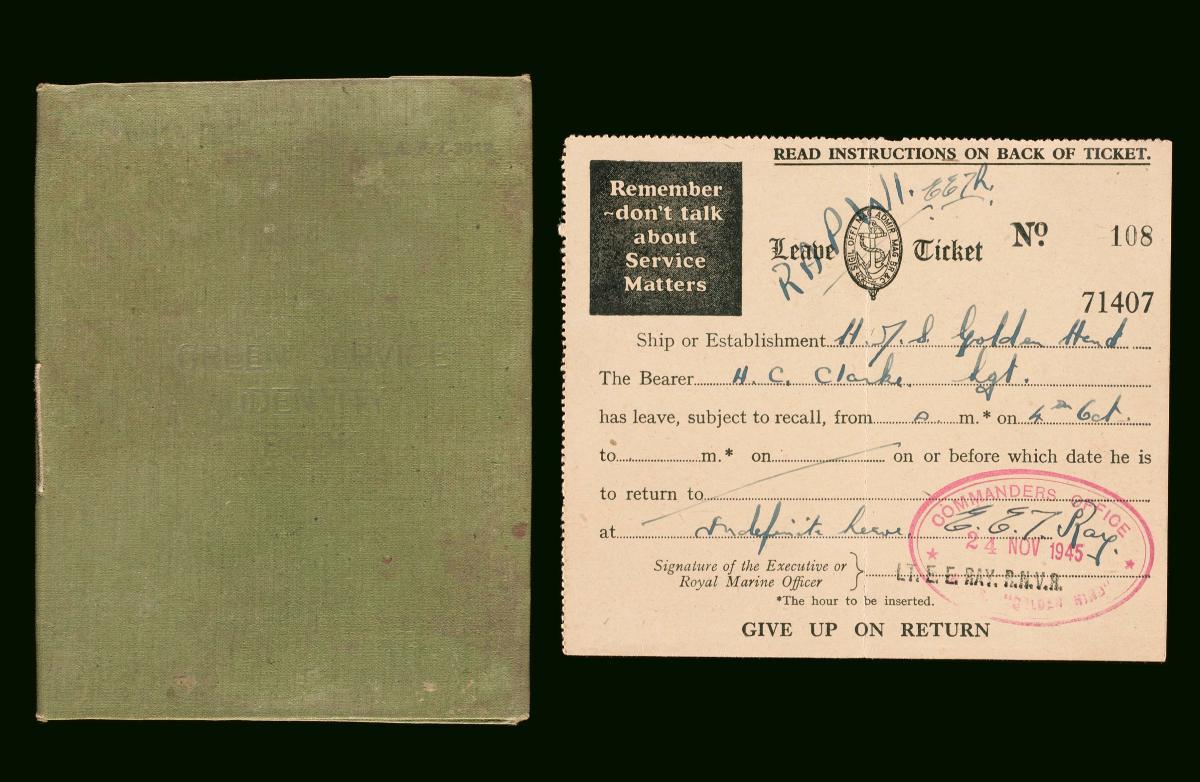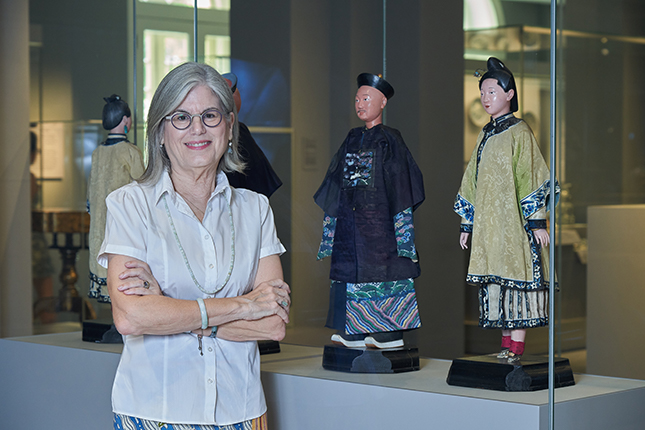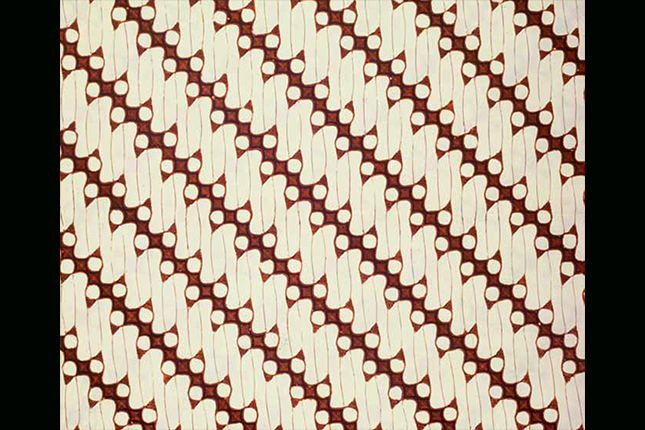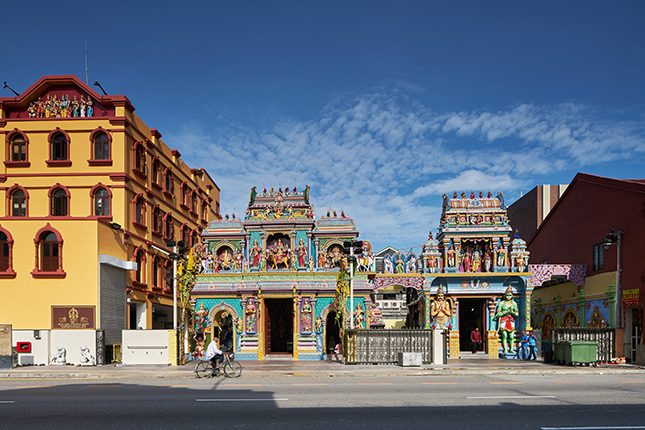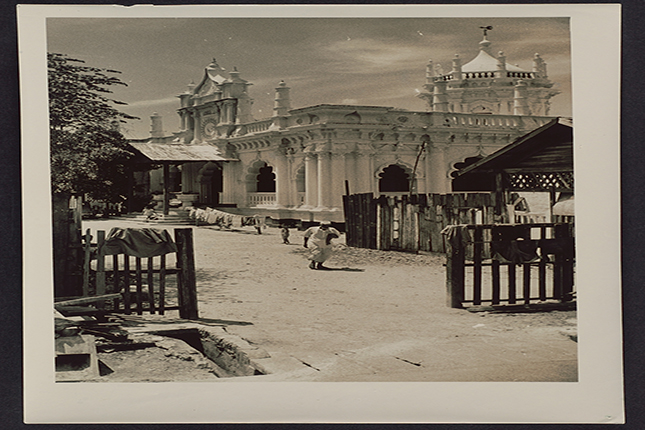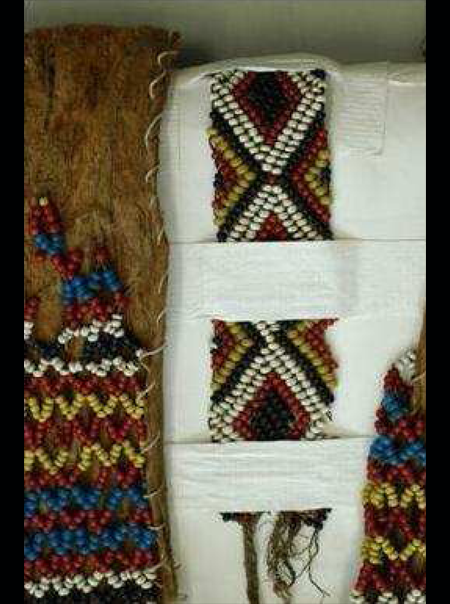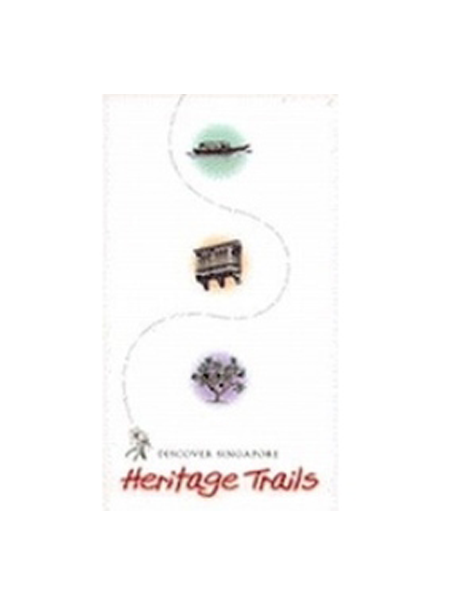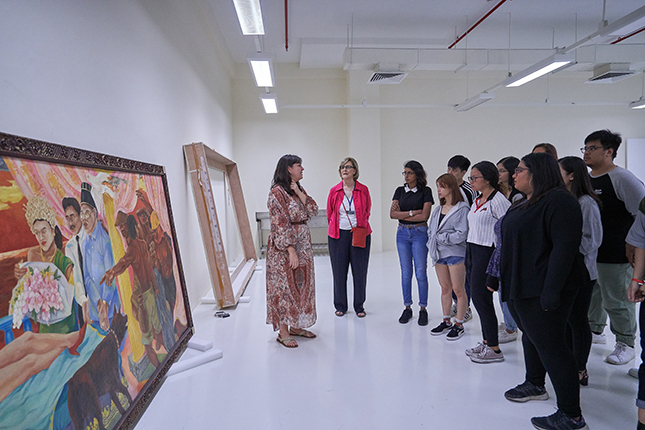
There is much to be proud of about the HCC located in Jurong. It lays claim to many firsts — it is home to the priceless artefacts and cultural heritage of Singapore’s national collection, it is the first of its kind in the region, and it has a centralised collections repository with conservation laboratories all under one roof. Sue has been a docent there for the past 15 years.
As a young adult, she worked in New York City as an Art Director. Once married, she and her husband started to travel widely. They would always bring back one or two pieces of artwork from the countries they visited to serve as reminders of their travels. As an HCC volunteer, she is now able to continue this enjoyment of art.
Early days of volunteering
Sue has been with the Friends of the Museum (FOM) since 1983. One trigger for signing up came from the walking tours of Singapore with Geraldene Lowe-Ismail during Sue’s first year here. One tour was all it took for Sue to decide to join the FOM.
Through the walking tours, Sue learned about the history, lives, and cultural traditions of the people in those neighbourhoods. She watched as Geraldine spoke to the shopkeepers and shared the stories with those on her trail. Her interest in the people, the culture, and the country grew.
In the early days with FOM, Sue focussed more on participating in FOM study groups and preparing lectures for the FOM Lecture Series at the National Museum of Singapore (NMS). “I was in charge of the lecture series for a term, did research for exhibitions and helped organise two exhibitions at the NMS – Things Japanese and Peranakan Heritage. I served as FOM President and then a member of the FOM Advisory Committee in the 1990s, during the expansion of the museum sector.”
When Sue attended the official opening of the HCC on 15 September 2000, FOM docents conducted tours of the centre. Sue was fascinated by the behind-the-scenes-tour and joined the next training offered by the centre. The quest was always about learning something new. HCC proved to be an ideal location for that. She learnt so much about the work the HCC staff did. She is quick to add that the professionals there are unique with a rare blend of expertise and unflagging patience. These traits are precisely what Sue also uses as part of her tours.
Guiding at the HCC
As a docent, Sue has come to find that visitors are most fascinated by what conservators do. “Conservators look beneath the surface of works of art to discern the artist’s inspiration.” Sue considers this an exceptional gift and skill.
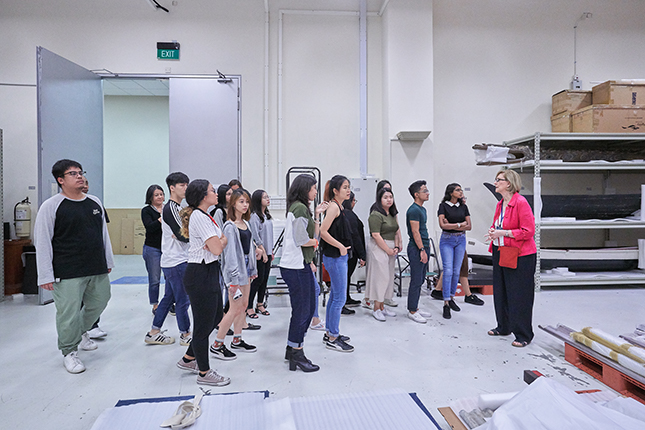
Sue highlights that what visitors to the art museums see is an integrated work of art. The conservators see it in its original state and determine through research and testing what the artist worked with at the outset and what is necessary to properly repair and conserve the art to ensure its long-term survival. “That’s where you get the real ‘wow’ moment,” says Sue. Often, everyone walks away from such a tour with a healthy respect for the conservators and the scientific knowledge and techniques they have mastered.
HCC is a secure facility, so tours are by appointment only. For most visitors, as the work of HCC is completely outside their expertise or knowledge, they are attentive and appreciative.
Sue explains that her tour focuses on two things. First, it looks at preventive conservation. This involves methods of taking care of items so they are secure and will last. This stage is more about the process and procedure than about the art per se. The second part of the tour is the conservation labs. There are four specialty labs: for objects, paper, paintings, and textiles.
“Tours at HCC enable visitors to better understand what happens beyond the museum walls: how Singapore’s art and heritage materials are conserved for the future and how artefacts are prepared for exhibition,” explains Sue.
The best takeaways
Sue walks away from each tour at HCC with a sense of gratitude and respect for the staff and conservators, some of whom she has come to know very well. “I would like to compliment the professionals at HCC for the excellent work they do and the generosity they have shown in sharing knowledge with the volunteers.”
Most rewarding for Sue is guiding the student visitors from arts management courses in the Polytechnics, the technical education stream or specialist arts schools. “For me it’s nice when a kid starts to see some connections to their studies or perhaps career choice.” And, that is basically what she cherishes about being a docent — the connection she makes with the people, the learning in greater detail of the ways of the people through their art, culture, and artefacts.
Still, at the end of it all, Sue loves the learning opportunities. She adds that it is important to her to be able to “to help visitors experience their visits to museums more deeply”.
By Shobi Pereira




